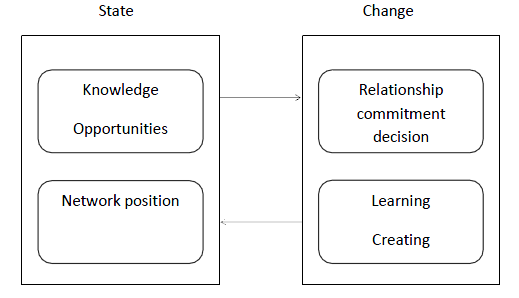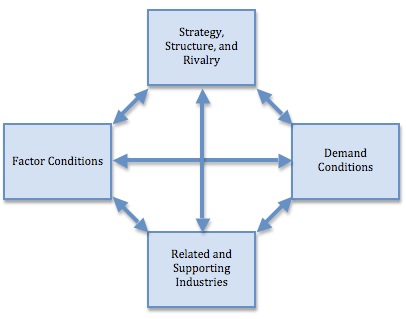International Business

1. Introduction The level of competition in the global marketplace has become highly intensive and this fact is resulting in mergers and acquisitions between companies across countries and continents. There is no dispute that “mergers and acquisitions are a vital part of any healthy economy and importantly, the primary way that companies are able to provide returns to owners and investors” (Sherman and Hart, 2006, p. 1). However, in reality a range of issues may arise in mergers caused by cross-cultural differences, differences in management style, clash of personalities within senior level management and other reasons. This report attempts to analyse issues associated with Alcatel-Lucent merger failure. The report contains analysis of factors that enabled the merger to take place and the analysis of performance of company in present. Moreover, discussions are provided about cross-cultural issues at Alcatel-Lucent and new challenges for the company in an international area are described. 2. Factors that Allowed Merger in 2006 There were previous negotiation talks between Alcatel and Lucent in 2001 regarding the merger of the two companies. However, negotiations had failed due to suspicions of Lucent management that Alcatel was approaching the proposal like a takeover of Lucent, rather than ‘merger of equals’. The concept of “merger of equals” has been described as “a merger framework usually applied whenever the merger participants are comparable in size, competitive position, profitability, and market capitalisation” (DePamphilis, 2009, p.18). However, some circumstances have changed by 2006 that resulted in renewed merger talks between Alcatel and Lucent. First, the level of competition in mobile telecommunication and internet industry has intensified and the two companies needed to merge in order to be able to compete with Chinese manufacturers and other industry leaders. Second, as a result of numerous negotiations between the two companies on top level Lucent senior…

1. Introduction Elecdyne is a Tokyo-based manufacturer of consumer electronics products that has been operating in local market in Japan for over three decades. Currently employing 100 members of workforce, Elecdyne strategic level management is keen to explore the potentials of revenue maximisation through internationalisation. This article represents a critical analysis of Elecdyne international market expansion opportunities. The article starts with a brief analysis of Elecdyne current situation and an overview of business environment for the company with the application of STEEP framework. This is followed by analysis of country profiles of UK, Russia and Turkey as a potential new market for Elecdyne using a weighted scaling system. The article is completed by specifying strategic direction for Elecdyne and providing rationale for the choice of direction being offered. 2. Current/Future Business Environment It has been noted that “an organisation does not exist in isolation but is part of a broader business environment, making it an open system” (Amos et al., 2008, p.3). Accordingly, Elecdyne is faced with a set of challenges caused by external factors that need to be addressed in timely and effective ways. Challenges imposed to Elecdyne by external environment can be effectively illustrated through STEEP table where the abbreviation stands for social, technological, economic, ecological and political factors affecting the business. Social Ø Intensifying level of cultural globalisation Ø Ageing of population in developed countries (Blakemore and Warwick-Booth, 2013) Ø Changing patterns of families (single parents, same sex parents etc.) Technological Ø Declining duration of life cycle for consumer electronics products Ø Increasing frequency of technological innovations Ø Technological breakthroughs in the area of electronics products recycling Economic Ø Declining profit margins for consumer electronics products due to intensifying competition Ø Likelihood of economic crises such as global recession of 2007 – 2009 Ø Rising costs of operations…

Introduction Increasing forces of globalisation have altered the terms and nature of conducting business considerably and irreversibly. As a result of globalisation businesses have been presented with a range of opportunities to contribute to the level of their revenues and these opportunities primarily include outsourcing various business processes abroad and exporting products to other countries. General Electric Company (GE) is a globally diversified technology and financial services company and its products and services include aircraft engines, power generation, water processing, and household appliances to medical imaging, business and consumer financing and industrial products (General Electric Co, Bloomberg, 2013). GE has achieved an international growth of 18% during 2011 which has contributed to company consolidated revenues of $147 billions during the same period of time. Moreover, 13,000 jobs were created by GE in US during 2011, and international sales of American-made products by GE had amounted to $18 billion during that year (GE Annual Report, 2011). This report evaluates the impact that globalisation has had on the policies of GE and specifies changes needed to be implemented taking into account the recent economic crisis in the USA and the global financial recession. The report addresses GE policy changes impacted by globalisation in an individual manner by referring to other relevant publications, and changes proposed for GE in the report have been justified in a detailed manner. Impact of Globalisation on GE Policies GE has attempted to take full advantage of possibilities provided by globalisation by formulating relevant policies mainly during the last decade under the leadership of its CEO Jeff Immelt. Financial Time’s Crooks (2012) recites the following words from Immelt: “When I became CEO [in 2001] we were 70 per cent inside the US industrially. Now we are 60 per cent outside the US”. The specific impacts of globalisation…

1. Introduction Mergers, acquisitions and formation of alliances are commonplace in global airline industry and they are fuelled by the search of competitive advantages in order to achieve long-term growth. However, the implementation of mergers, acquisitions and formation of strategic alliances in practice can be associated with a set of complex challenges that might include differences in organisational culture, clash of personalities within top level management, lack or absence of strategic fit between the two companies and others. Lufthansa Group is a global airline company that employs more than 120,000 workforces that have contributed to generate 713 million EURO through serving 100.6 million passengers during the year of 2011 alone (Annual Report, 2011). Germanwings is a budget airline company that employs 1355 members of staff and served 7.52 million customers in 2011 offering flights to more than 90 destinations with 33 Airbus A 319 airplanes (Facts and Figures, 2013, online). Germanwings is wholly owned by Lufthansa since 2009. This report investigates a range of business issues related to the acquisition of Germanwings by Lufthansa German Airlines in 2009. The report starts with analysis of motives for choosing acquisition method among other alternatives by Lufthansa. This is followed by discussions of strategic and organisational fit between Lufthansa and Germanwings. Moreover, this report addresses potential gains and risks faced by Lufthansa due to the acquisition of Germanwings. The report is concluded with assessing outcomes relative to expectations in relation to this specific airline acquisition. 2. The Motives for Choosing Acquisition Method by Lufthansa Top level management of Lufthansa have selected the method of acquisition among other alternatives such as initiating a merger or forming a strategic alliance in relation to Germanwings due to the set of reasons that include less time required to complete the acquisition, increasing the market share, overcoming entry…

This article contains application of Vernon’s Product Life Cycle on the case study of Shanghai Vision Technology Co., Ltd, a medium sized manufacturer of 3D printers and other innovative products based in Shanghai, China. Products of Shanghai Vision Technology to be sold in new markets follow a specific life cycle pattern. This pattern can be effectively explained using Vernon’s product life cycle which comprises four stages: introduction, growth, maturity and decline. Introduction stage for Shanghai Vision Technology 3D printers and other products commences when the product is offered in new market for the first time. During this stage Shanghai Vision Technology products are purchased mainly by ‘innovator’ and ‘early adopter’ consumer categories and the role of effective integrated marketing strategy is paramount. Growth stage for Shanghai Vision Technology products is associated with rapid increase of the sales volume due to the impact of marketing initiatives and word-of mouth marketing. It is important for Shanghai Vision Technology to ensure the supply of its products in the market during this stage. Maturity stage is reached when the majority of Shanghai Vision Technology target customer segment already posses 3D printers and other products offered by the company and its competitors. Maturity stage is associated with market saturation. Decline stage is inevitable for Shanghai Vision Technology products, as well as for products of any other company regardless of the industry and size of the market. Determining the timeframe of this stage in an appropriate manner and introducing new products to the market during the later stages of decline plays an important role for Shanghai Vision Technology in terms of retaining its share in new markets. …

This article contains application of Dunning Eclectic Paradigm on the case study of Shanghai Vision Technology Co., Ltd, a medium sized manufacturer of 3D printers and other innovative products based in Shanghai, China. Exporting can be specified as the most appropriate new market entry strategy for Shanghai Vision Technology during the early stages of internationalisation. Exporting new market entry strategy can be explained a greater depth using Dunning Eclectic Paradigm (DEP) that relies upon three types of advantages – ownership, location and internationalisation advantages. Ownership advantages The choice of exporting as new market entry strategy grants Shanghai Vision Technology the complete ownership advantage of all components of marketing mix. In other words, by choosing exporting the company retains complete freedom in terms of introducing changes to pricing, product specifications, distribution channels and promotion initiatives. Location advantages Ownership and internationalisation advantages to be derived by Shanghai Vision Technology due to the selection of exporting new market entry strategy is going to be facilitated at the expense of location advantages. Specifically, by exporting its products to new markets Shanghai Vision Technology would not possess location advantages with negative implications such as being disadvantaged from tariff barriers and higher transportation costs compared to local businesses. Internationalisation advantages Internationalisation advantages within Dunning Eclectic Paradigm relates to cost advantages that are gained through organising operations within geographical boundaries of new markets. Positive impact of internationalisation to Shanghai Vision Technology is limited during the first stage of international market expansion strategy due to the recommended choice of exporting new market entry strategy. Nevertheless, this specific type of advantage may become available to Shanghai Vision Technology during the later stages of Uppsala model described above once the company establishes sales subsidiaries and production unit abroad.

This article contains application of Uppsala model of internationalisation on the case study of Shanghai Vision Technology Co., Ltd, a medium sized manufacturer of 3D printers and other innovative products based in Shanghai, China. Uppsala model of internationalisation also known as a learning theory of internationalisation identifies four individual steps of internationalisation. According to Uppsala model engaging in exporting in occasional manner should constitute the first step in internationalisation. Initial experience of operating in the new market is going to be gained by Shanghai Vision Technology during this step. Exporting through sales agents in new markets marks the second step in internationalisation. Presence of the company in the new market is going to be increased during this step with positive implications on the levels of knowledge about unique aspects of the market. Establishment of Shanghai Vision Technology sales subsidiaries in foreign market is the third step of internationalisation according to the model. During this step the company is in the position of obtaining experience and knowledge about the market in a direct manner. Starting the production in the foreign market through wholly owned subsidiaries is the last step of internationalisation within the framework of Uppsala model of internationalisation. This step is associated with benefiting from ownership, location and internationalisation advantages by Shanghai Vision Technology to a full extent which is explained with the application of Dunning Electric Paradigm further below. Importantly, Uppsala model acknowledges the lack of knowledge about specifications of new markets to be an important barrier in terms of becoming successful in respective market. In other words, unlike many other models of internationalisation, Uppsala model rightly specifies knowledge about the market as a critical success factors. Revised version of Uppsala model contains the application of basic networking prospect in a way that mutual interactions and influence of state…

This article contains application of Diamond of National Advantage on the case study of Shanghai Vision Technology Co., Ltd, a medium sized manufacturer of 3D printers and other innovative products based in Shanghai, China. Main motive for internationalisation for Shanghai Vision Technology relates to attempts to increase the levels of revenues through international market expansion strategy. The idea of Competitive Advantage of Nations proposed by Porter (1990) is based on four major points of competitive advantage jointly referred to as the Diamond of National Advantage that can be applied to the case study of Shanghai Vision Technology in the following manner: Factor conditions within the framework of the Diamond of National Advantage are favourable towards Shanghai Vision Technology internationalisation perspectives. This is because adequate infrastructure has been developed in China mainly during the last two decades in industry of advanced technologies such as 3D printing to serve as a platform for local manufacturers to compete globally. Demand conditions can also be specified as an important factor that contributes to the level of global competitiveness of Shanghai Vision Technology. In other words, there are not major differences in the nature of demand for 3D printers in home market in China and foreign markets. Therefore, Shanghai Vision Technology’s present successful operation in home market in China can be rightly perceived as a prerequisite for success in the global marketplace to a certain extent. Related and supporting industries in relation to advanced technologies such as 3D printer manufacturing are effectively established in China. Moreover, China is a manufacturing home for a wide range of components of advanced technological products and cost advantage of those components can be specified as an additional point of strengths for Shanghai Vision Technology to compete in a global market. Firm strategy, structure and rivalry is another important point…
By John Dudovskiy
Category: International Business

With the increasing forces of globalisation the need for trade regulation in an unbiased and objective manner increases. This role has been assumed by World Trade Organisation (WTO) and its functions include administration of trade agreements, serving as a forum for trade negotiations, dealing with trade disputes between its members, and monitoring policies of its members related to trade. Established in January 1, 1995, WTO comprises 159 members and it is based in Geneva, Switzerland (Annual Report, 2013). There are contradicting assessments of WTO performance in terms of regulating trade between counties in an effective manner. You can read more scope, contribution and criticism related to WTO here. On one hand, WTO has been praised for such positive impacts as stimulating economic growth and increasing the level of employment, encouraging good governance practices, contributing to peace and stability and settling trade disputes amongst its members (Ahern and Fergusson, 2010). On the other hand, WTO critics argue that the organisation has made a counter-productive impact on development of a range of its members, and it also has been blamed for neglecting environmental issues. Moreover, WTO has been criticised on the grounds of political bias for serving as an instrument at the hands of its few hegemonic members. Moreover, there are other international organisations which are parts of United Nations Organisations (UN) such as World Bank, and International Monetary Fund (IMF), that have certain impacts in international trade practices. UN in general, and its Economic and Social Council in particular can be specified as another international organisation that does have impact on trade regulation between countries. Comprising 54 members for three-year terms, the Economic and Social Council aims to promote international cooperation in order to achieve economic and social development. Millennium Development Goals is one of the most noteworthy economic initiatives proposed…

In line with the advantages of free trade discussed here, there is a set of objections to free and these objections can be represented through the following four points. Firstly, free trade is criticised due to its perceived disadvantages to local producers. The concept of free trade promotes open competition without barriers in the global scale. Thus, companies from abroad with strong competitive edge may present serious threat to the levels of revenues of local businesses. However, this threat can be used as a positive factor as well, in terms of motivating local producers to innovate and search for additional sources of competitive edge in creative ways. From this perspective, local producers need to be assisted by government through building effective infrastructure for competition rather than being protected from foreign competitors limiting their motivation to innovate. Secondly, free trade is blamed for causing trade deficits with detrimental impacts on national economy. Specifically, trade deficit is an absence of balance between imports and exports and reducing the levels of trade deficits is one the main macroeconomic goals of the government. Trade deficit between US and China has been estimated to be as much as USD 40.6 billion (Crutsinger, 2014, online), and a range of economists point to this number as one of the main reasons for severe economic issues in the US. At the same time, counter-argument can be formulated in a way that “a growing trade deficit, despite its misleading name, is a good for the economy. It is typically a signal that global investors are confident in America’s future” (Boudreaux, 2014, online). In other words, there is a positive correlation between trade deficit and the levels of investment in the national economy from abroad, and these investments have great potential to revive national economy. Thirdly, free trade is criticised for…
